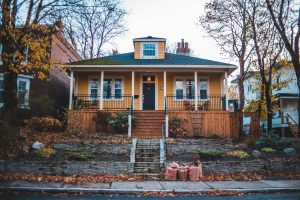 When it Comes to building wealth, the American single-family home is the gold standard of investments. Not only is a home a place to live, but it is typically the largest investment most people will ever make—and for those that take the plunge, they can expect their investment to pay off in spades.
When it Comes to building wealth, the American single-family home is the gold standard of investments. Not only is a home a place to live, but it is typically the largest investment most people will ever make—and for those that take the plunge, they can expect their investment to pay off in spades.
Housing wealth is mainly built by price appreciation gains. Over the last 30 years, the average home appreciated at a rate of 4.3%. But home price appreciation has ramped up over the last 10 years with returns reaching 8.3% annually.
Taking a deep dive into the effects of home price appreciation on the middle-class, the National Association of Realtors (NAR) Research Group has published a new 15-page report looking at the distribution of housing wealth in the 11-year period between 2010-2020 across all of the 917 metropolitan and micropolitan jurisdictions in the U.S.
In dollar terms, housing wealth grew across the country by $8.2 trillion between 2010-2020, rising from $15.9 trillion to $24.1 trillion. This represents 6.3 million more homeowner households reaping the wealth gains from homeownership.
Putting that data another way, a homeowner who purchased a home in 2010 at the then-median sale price of $162,600 is likely to have accumulated $229,400 in housing wealth alone.
529 of the 917 metro areas monitored by the report saw an increase in the number of middle-income households. The top five Cities that saw middle-income housing increase are Phoenix (103,690); Austin, Texas (61,323); Nashville, Tennessee (55,252); Dallas (53,421); and Houston (52,716).
As of the fourth quarter of 2021, the largest net price gains (as a percent of the purchase price) were Phoenix (275.3%); Atlanta (274.7%); Las Vegas (251.7%); Cape Coral-Fort Meyers, Florida (233.9%); and Riverside-San Bernardino, California (207.6%).
“Unfortunately, as home prices have become less affordable, the distribution of housing wealth has worsened in the past decade, with low- and middle-income households sharing less of the housing wealth pie,” the NAR said. “Of the $8.2 trillion in housing wealth accumulated from 2010 to 2020, high-income homeowners accounted for $5.8 trillion, or 71% of the wealth accumulation.”
“Among middle-income homeowners, total housing wealth increased by $2.1 trillion, or 26% of the housing wealth gains, with 980,000 additional middle-income homeowner households. Among low-income homeowners, housing wealth rose by $296 billion, or 4% of the housing wealth gain with 5.8 million fewer low-income homeowner households.”
Low-income homeowners were found to make up 27.2% of the housing market, middle-income homeowners make up 43% and high-income homeowners held 29.8% of the Market.
"Homeownership is rewarding in so many ways and can serve as a vital component in achieving financial stability," said NAR President Leslie Rouda Smith, a Realtor from Plano, Texas, and a broker associate at Dave Perry-Miller Real Estate in Dallas. "Now, we must focus on increasing access to safe, affordable housing and ensuring that more people can begin to amass and pass on the gains from homeownership."

 DSNews The homepage of the servicing industry
DSNews The homepage of the servicing industry









